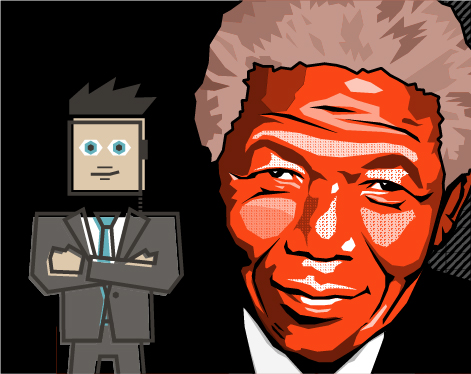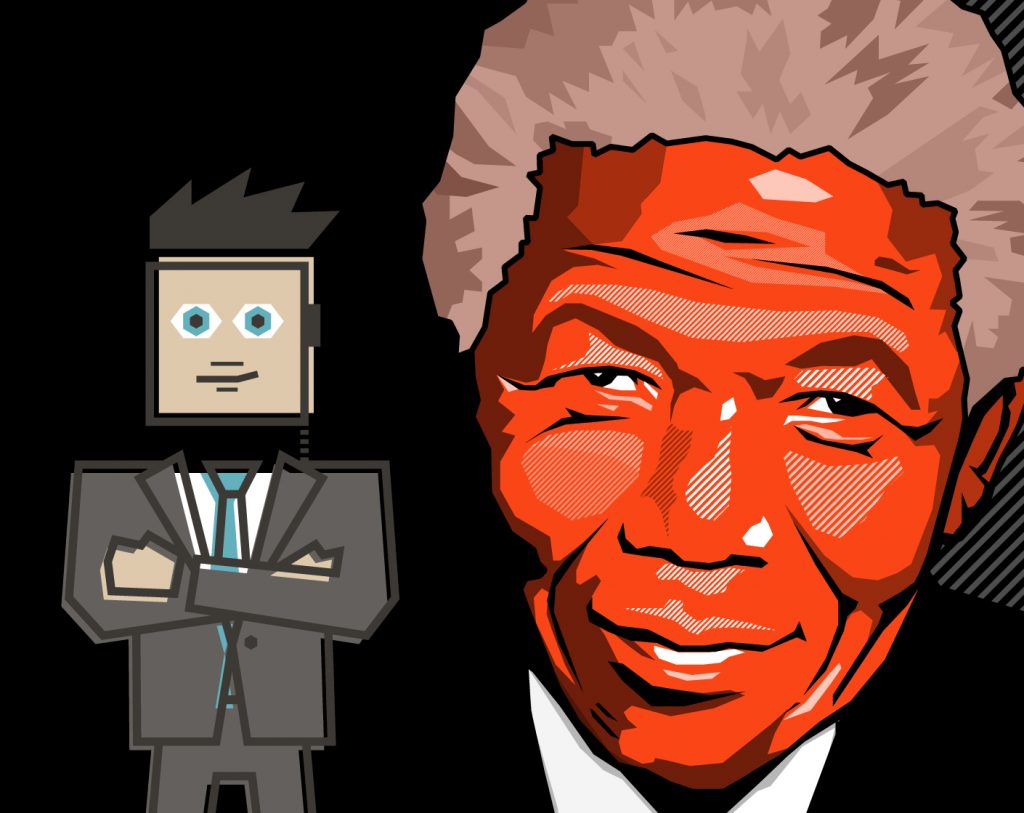It’s time to get personal with physical security
By: Rory Steyn

Rory Steyn, Nelson Mandela’s former personal protection team leader, has many insights to share from his time working with the South African president. Many of his key security principles are just as relevant to our industry today as they were to his in the 90s. Here, Rory reveals how the best physical security stems from a deep understanding of people.
I reported for duty at the president’s Houghton Estate, Johannesburg home with my team on the morning of 18 July 1998. The president called me before we departed for his office at the Union Buildings. “Rory,” he said, “today there will be a ceremony.”
Later that day, on his 80th birthday, Nelson Mandela married Graça Machel.
It was a privilege to be one of a handful of guests (and a few of us who were working) at the wedding. But, as the leader of his personal protection team, the security situation was far from ideal.
President Mandela’s surprise announcement had left us no time to prepare an iron-clad security plan for the occasion and the small list of high profile guests.
And, although he was overwhelmingly popular with the general public by this point, there was no shortage of people who posed a threat to the president, from the far-right Afrikaner Resistance Movement to even people from within his own party.
That wasn’t the first time he’d taken me by surprise. He surprised me the first day I met him and many times since. It was part of his personality, his very essence, to behave in unexpected ways.
Nelson Mandela walks into a shopping mall…
Sounds like the set-up to a bad joke, doesn’t it?
Madiba was known to hit the shops from time to time, and that meant our team had to be ready for anything.
Forever the romantic, he loved spoiling Mam’ Graça with gifts; chocolates, flowers, jewellery, you name it. But unlike other presidents who would send their staff to buy the items – in fact we insisted on that option – Madiba insisted on choosing the gifts himself. I’m convinced that he secretly loved any occasion to simply mingle with ordinary people in a shopping mall!
Pandemonium broke out whenever he strolled into the Sandton City shopping mall to buy his sweetheart some chocolates (or whatever gift was written on his heart that day).
Within minutes of his arrival, crowds formed outside whichever shop he was browsing in. And this was before social media, remember. It would be ten times worse now.
One day the president decided he wanted to buy a book, so we went to a bookstore. Suddenly, people were flooding into the shop, hysterical with excitement. My guys immediately started shutting the shop doors. “Rory, no,” Madiba said, “tell them not to.” “But Tata,” I reasoned with him, “if we don’t close the doors they are going to steal all the books! “Ah, ok,” he said, disappointed, “close the doors.”
It was no secret that Madiba loved spending time in public places; something that sent more than a few curveballs our way. He also genuinely loved people. And after being imprisoned for 27 years, he cherished every chance he got to talk to them. Who could deny him that?
We quickly learned to accommodate this aspect of Madiba’s personality into our protection strategy. And I’m proud to have served a president who wanted to spend so much time among his people.
Upon receiving the 1993 Nobel Peace Prize, Mandela said, “Children are our greatest treasure.” This was not merely a facade. He loved children dearly.
If he came out of a building and there were kids nearby, he’d make a beeline for them. We knew that. Singing in the street with groups of children was one of his favorite things to do. With, not to them!
We came to predict this behaviour and would prep the kids in advance. We’d go to them beforehand and say, “If the president comes to see you, please don’t all run to him at once. Wait your turn, he will greet every single one of you.”
You can’t protect what you don’t understand
Mandela’s behaviour surprised me at first. However, the more time I spent with him the more I understood what drove him, how he thought and why he made the decisions he did. This knowledge formed the basis of our protection strategy. I also learned plenty regarding the president’s behaviour from my colleagues who had served and protected him ever since he was released from jail as the world’s most famous political prisoner.
So what’s all of this got to do with data centre security?
Protecting a person is a lot like protecting a physical asset. It’s not something you walk into blindly; you do your research, ask lots of questions, and talk to the people who know the person or the project best. Learn from them. And then you look outside of the person or physical asset, and consider how external influences could impact security.
If you want to achieve effective physical security in your data centre, you need to approach it on a personal level.
Security personnel take on a secondary role, as investigators. Both personal and physical security relies on a synergistic team who are comfortable challenging one anothers’ preconceptions. Talk to one another. No voice is less important than another.
You will never have the best security strategy until your collective team possesses an intimate knowledge of the details. Because you can’t protect what you don’t understand.
Rory Steyn is an accomplished former member of the South African Police Service. In 1996, he was appointed team leader of President Mandela’s personal protection team. Rory later retired from the police service and set up his own security consultancy, NSA Global Security Consultants with Bob Nicholls. NSA Global is now South Africa’s largest executive protection employer, counting Fortune 500 and blue-chip companies among their clients. Rory also founded The African Icons Invitational NPC in 2018, a charity cycle ride that raises funds to support the children of police officers slain in the line of duty.



